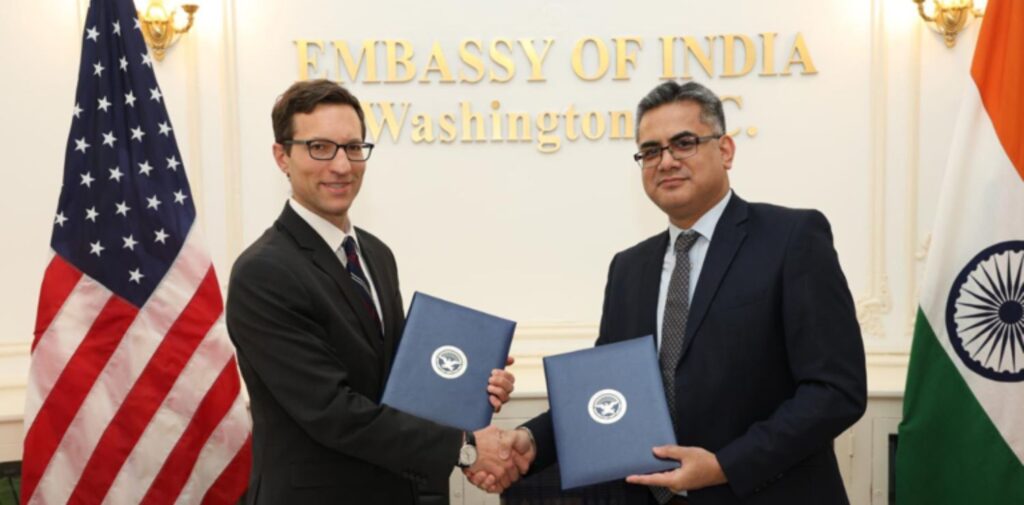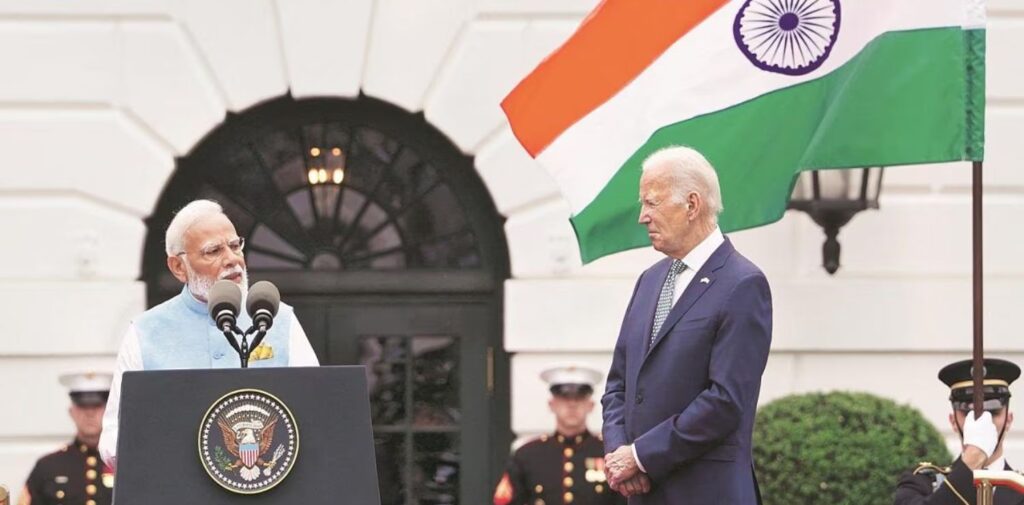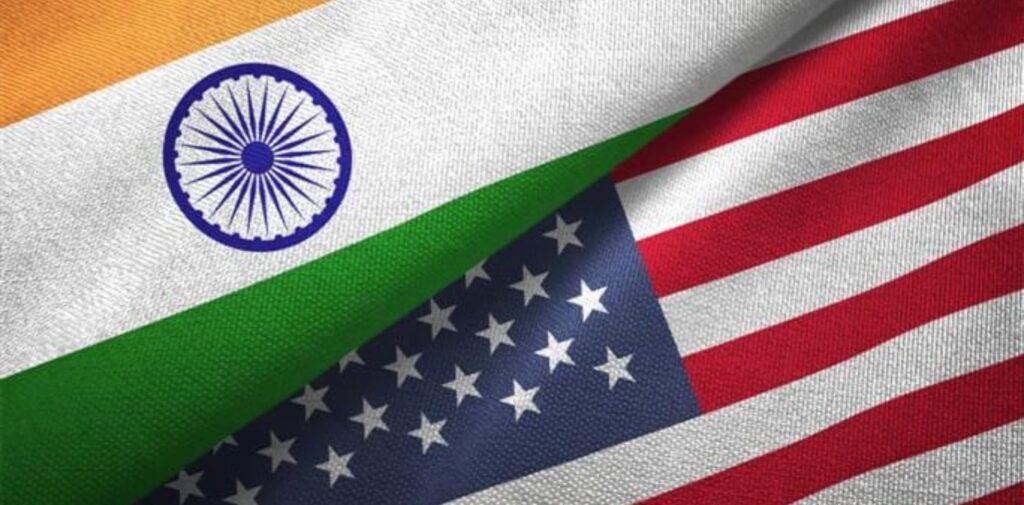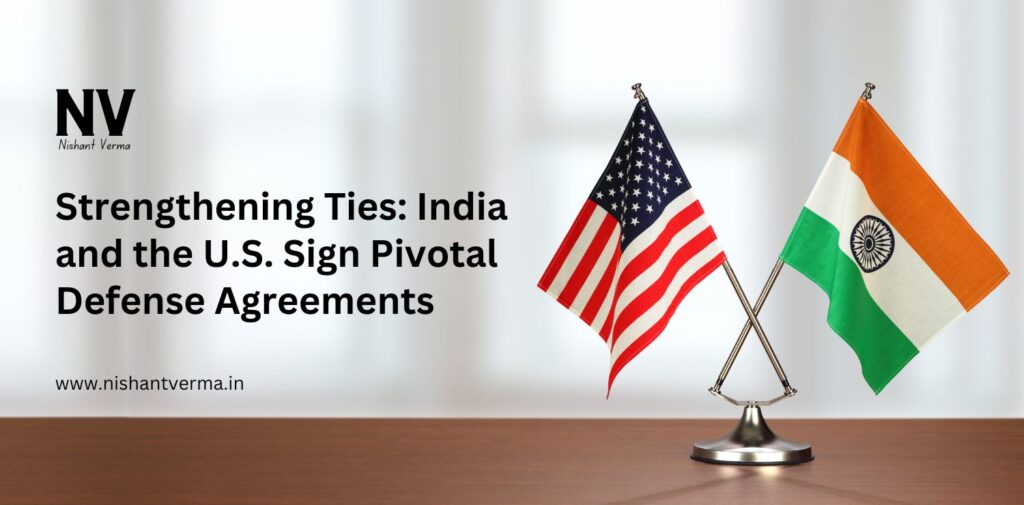India and the United States recently took a significant step in their evolving defense partnership by signing two key agreements during Indian Defense Minister Rajnath Singh’s visit to Washington in August 2024. These agreements, the Security of Supply Arrangement (SOSA) and the Memorandum of Agreement regarding the Assignment of Liaison Officers, are set to bolster defense cooperation between the two nations and further integrate their defense industrial bases.
Security of Supply Arrangement (SOSA)
The SOSA is a bilateral, non-binding agreement that ensures reciprocal priority support for critical defense goods and services between India and the U.S. This arrangement is particularly significant as it allows both nations to request priority delivery of essential defense materials from each other, especially during emergencies or conflicts. This is a crucial development in enhancing the resilience of their defense supply chains, which is vital in a world where global supply chains are increasingly under strain due to geopolitical tensions and other disruptions.

India’s inclusion in the SOSA makes it the 18th country to sign such an agreement with the U.S., joining other key allies and partners like Australia, Japan, and the United Kingdom. This is seen as a testament to the deepening strategic ties between the two nations, which have been on an upward trajectory for the past two decades.
The SOSA is not just a symbolic gesture but a practical mechanism to ensure that both countries can quickly mobilize defense resources when needed. For instance, if India faces a sudden shortage of critical defense supplies during a conflict, it can rely on this agreement to expedite the procurement process from the U.S., and vice versa. This agreement also sets the stage for future legally binding agreements, such as the Reciprocal Defense Procurement (RDP) agreement, which would further solidify these commitments.
Memorandum of Agreement on Liaison Officers
The second agreement focuses on the deployment of liaison officers from India to strategic U.S. military commands. Under this agreement, Indian armed forces officers will be stationed at key U.S. military commands, such as the U.S. Special Operations Command (USSOCOM) in Florida. This is a significant move towards enhancing interoperability between the two military forces and improving real-time information sharing.
The presence of Indian officers in U.S. commands is expected to facilitate better coordination during joint operations, exercises, and in times of crisis. This level of integration is vital for the operational readiness of both countries’ forces, especially as they conduct more frequent and complex joint military exercises in the Indo-Pacific region.
Broader Implications and Strategic Context
These agreements are part of a broader strategic roadmap that both countries have been following, aimed at deepening defense industrial cooperation. In June 2023, during Prime Minister Narendra Modi’s visit to Washington, both nations outlined a roadmap for defense industrial collaboration, which included co-production projects for jet engines, unmanned platforms, and munitions. The SOSA and liaison officers’ agreement are seen as foundational steps in realizing these broader goals.

Moreover, these agreements come at a time when the Indo-Pacific region is becoming increasingly central to global geopolitics. Both India and the U.S. share a common interest in ensuring the stability and security of this region, which is threatened by the growing assertiveness of China. By enhancing their defense ties, the two countries are sending a strong signal of their commitment to maintaining a free and open Indo-Pacific.
Additionally, these agreements also reflect the mutual trust and confidence that have developed between India and the U.S. over the years. From being estranged democracies during the Cold War to now being close defense partners, the journey has been remarkable. The strategic partnership between the two countries has grown exponentially, driven by shared democratic values, economic interests, and security concerns.
Future Prospects
The signing of these agreements opens up several future possibilities for India-U.S. defense cooperation. The next anticipated step is the conclusion of the Reciprocal Defense Procurement (RDP) agreement, which will be legally binding and further cement the defense industrial relationship between the two nations.

Furthermore, these developments could lead to greater collaboration in emerging defense technologies, such as artificial intelligence, cyber warfare, and space security. Both countries are keen on co-developing and co-producing defense technologies that can enhance their strategic autonomy while also contributing to global security.
In conclusion, the recent defense agreements between India and the U.S. mark a significant milestone in their bilateral relationship. They not only strengthen the defense industrial ties between the two nations but also enhance their strategic partnership in the Indo-Pacific region. As both countries continue to navigate the complexities of global geopolitics, these agreements will serve as a strong foundation for future collaboration and mutual support in the defense sector.




